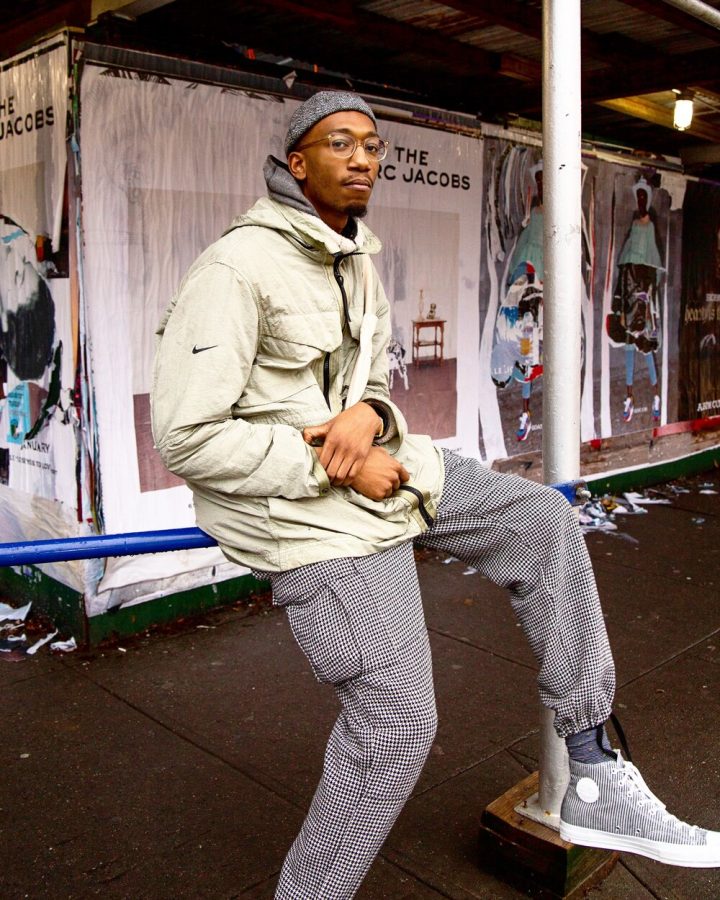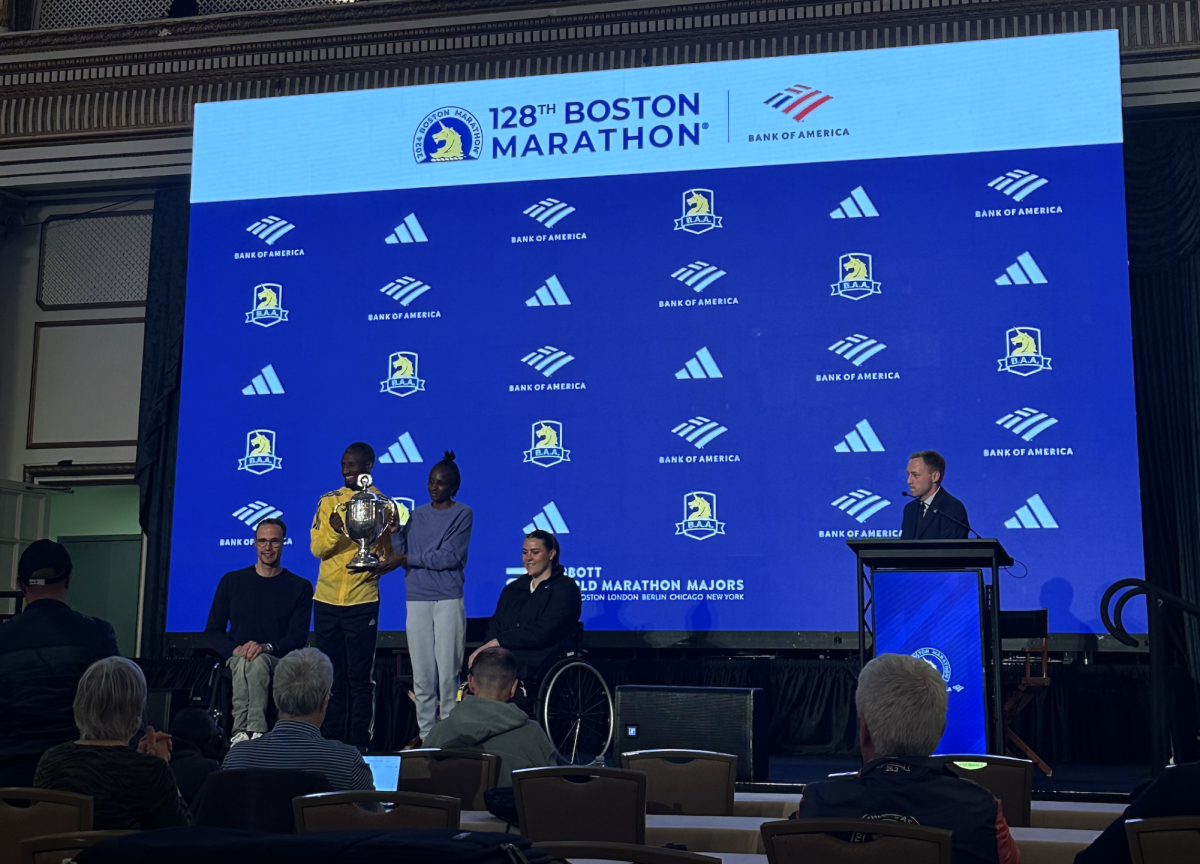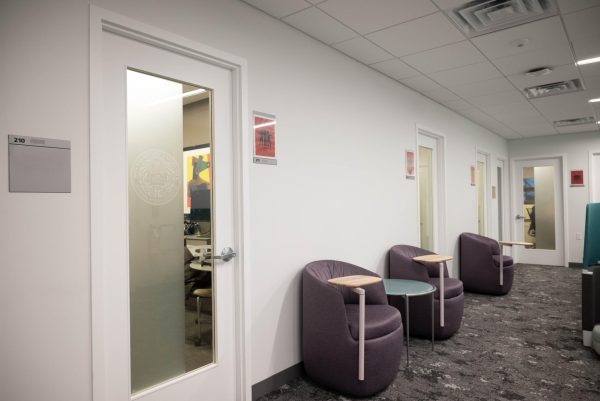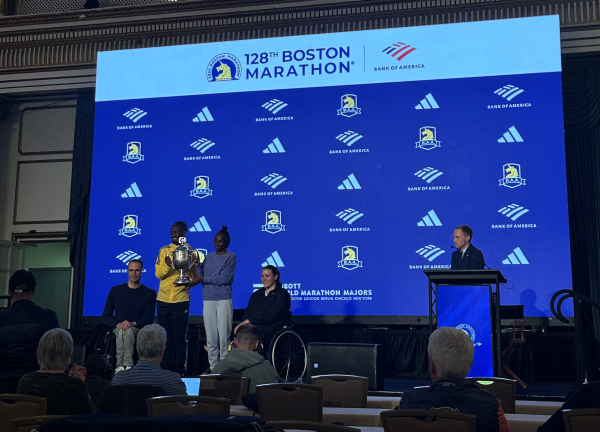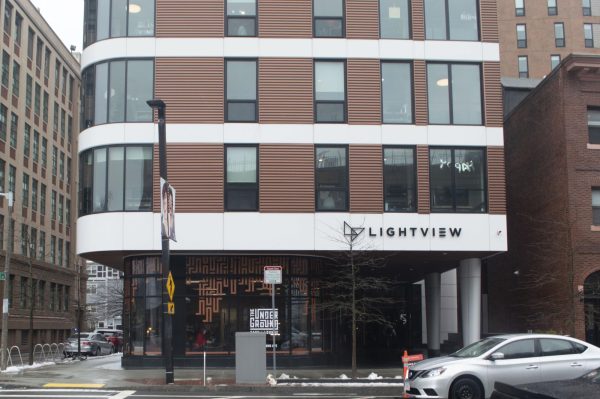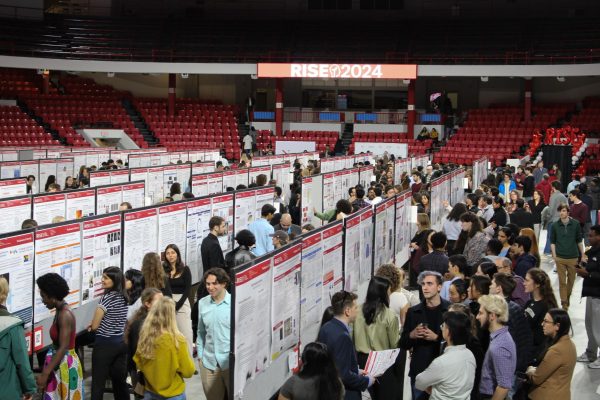NU alum Tyler Blint-Welsh was assaulted by the police. Professionals offer advice for student journalists
Photo courtesy Tyler Blint-Welsh
April 6, 2021
Last May, New York City Police Department officers attacked Tyler Blint-Welsh, Northeastern alum and current reporter for The Wall Street Journal, at a protest against police brutality following the death of George Floyd.
“At a point I think someone threw a bottle, and then the police charged forward and started picking people off and tackling people,” Blint-Welsh said. “By the end, when they were done pushing us, I turned around trying to walk away, and they pushed me to the ground and I messed up my foot.”
Blint-Welsh’s experience is not unique. According to the U.S. Press Freedom Tracker, he is one of 398 journalists who were assaulted by police in 2020.
Tension between law enforcement and journalists sharply increased in 2020. According to Shannon Jankowski, a legal fellow at the Reporter’s Committee for Freedom of the Press, the U.S. Press Freedom Tracker recorded 400 incidents where press were “assaulted, arrested or otherwise prevented from documenting history” from 2017-2019. In 2020 alone, however, they recorded over 1,000.
Jankowski suspects the drastic spike can be partially attributed to the increased number of protests last summer. In May, George Floyd, a 46-year-old Black man, died after a police officer knelt on his neck for over eight minutes. Advocates worldwide demanded justice for Floyd and several others who had died at the hands of law enforcement in 2020, including Breonna Taylor, Rayshard Brooks and Daniel Prude.
Many journalists of color covering these protests were suppressed, assaulted and, in some cases, arrested.
Jankowski also said that the growing population of Americans who hold the media in contempt could be another influence on the increasing number of assaults against members of the press. After former President Donald Trump labelled the mainstream media as “fake news,” a number of Americans expressed distaste for journalists.
“It can also be possible that changing opinions on the news media, driven by rhetoric that has been expressed by various public figures about fake news and the press being the enemy of the people, … could have been a large factor contributing to this as well,” Jankowski said.
Blint-Welsh, acutely familiar with the dangers of reporting during an era of police violence and disdain for the media, said journalists should be hyper-aware of both their physical surroundings and their legal protections when covering protests.
“You need a certain level of awareness about where you are and what you’re doing, how you position yourself and where your exit routes are,” Blint-Welsh said. “You have to prepare yourself for the worst.”
Put simply, “you need to have your wits about you,” he said, which means being aware of the Constitutional right afforded to the press by the First Amendment: “Congress shall make no law … abridging the freedom of speech, or of the press.”
Jankowski said the First Amendment should protect the rights of journalists to gather and disseminate news. At a protest, this may involve filming, photographing, interviewing protestors and recording the police.
However, the extent of the amendment’s protections aren’t as expansive as one might expect, said Northeastern associate professor of journalism and media law expert Laurel Leff. She said there are limitations on the First Amendment that journalists must be aware of and explained the particular vulnerability of journalists covering conflict, like Blint-Welsh did last summer.
You need a certain level of awareness about where you are and what you’re doing, how you position yourself and where your exit routes are. You have to prepare yourself for the worst.
— Tyler Blint-Welsh
At protests, there is often a conflict of interest between a journalist’s job and a police officer’s job. Leff said police often attempt to “control the crowd.”
“If a journalist wants to know where is the crowd, what are they doing, what’s happening, talking to people who are protesting — that could come into conflict with law enforcement’s ability to control the scene,” she said.
Since the 1970s, journalists have argued for more legal rights due to their responsibility to inform the public. But because journalists aren’t licensed in the United States, the government cannot limit who becomes a member of the press, and thus they have few constitutional rights other than those afforded to private citizens. Advocates argue the press needs special protections that would afford the ability to do things like enter dangerous places sealed off to the public or testify in court without the presence of a jury. Others say the title “journalists” is ambiguous, and this could allow anyone to claim they are entitled to journalistic privileges.
“I think there was a real concern that this would just open up the floodgates of people making arguments about why they had a right to do this or that because they’re a journalist,” Leff said. “It’s harder to distinguish who has a legitimate reason and who doesn’t have a legitimate reason.”
Since journalists don’t have rights beyond those allotted to the general public, they must comply with all laws attributed to the general public unless state-specific statutes indicate otherwise. For instance, in California, journalists are allowed to be in areas of natural disaster even if everyday people are not. In Oregon, this is not the case. This state-specific statute made it easier for Californian journalists to report on the West Coast wildfires in 2020. However, Blint-Welsh’s story shows that even journalists acting lawfully can be targets of police violence.
In the case of assault, there are some steps journalists can take. For instance, the Manhattan District Attorney’s Office opened an investigation into Blint-Welsh’s assault in June.
“You can sue law enforcement,” Leff said. “Certainly here journalists should be no different than anybody else in that police shouldn’t use excessive force … There is a possibility of filing a civil suit saying, ‘You harmed me in some way, and I want to collect some kind of damages for the injury that I’ve suffered.’”
But even after filing a lawsuit, Leff said it can be difficult for journalists to win the case due to immunity granted to law enforcement.
“I think the difficulty — as we’ve seen in both criminal and civil suits — is that people give a lot of deference to law enforcement,” Leff said. “They think they have a tough job … And so actually winning a civil suit is not necessarily going to be easy.”
To avoid incidents with law enforcement at protests, journalists can take precautions to be as safe as possible. Jankowski, who has led journalism trainings about avoiding arrest at protests, echoed Blint-Welsh’s advice and said it is always important to have a plan.
“We always tell people to do their research ahead of time,” Jankowski said. “Read about if there have been other recent protests in that particular area. Maybe try to learn about what police crowd-control practices are in that area. For example, have the police ever kettled people before?”
There’s a lot of energy, and it makes those situations pretty cool, and it feels like you’re a part of something bigger than yourself.
— Tyler Blint-Welsh
Jankowski also recommends that journalists arm themselves with sufficient personal protection equipment, or PPE. While this is especially important during the pandemic, PPE can mean anything from face masks to gear protecting journalists against tear gas and pepper balls.
Despite the potential dangers inherent in covering protests, Blint-Welsh said that racial and social justice reporting is still a valuable and fulfilling experience.
“There’s a real and genuine human emotion there,” he said. “There’s a lot of energy, and it makes those situations pretty cool, and it feels like you’re a part of something bigger than yourself.”
While Blint-Welsh said it can be exciting to report on protests, he said social and racial justice reporting goes far beyond that. It involves covering political forms of oppression by investigating cause initiatives and state legislatures and monitoring Congress.
“You really have to integrate yourself with activists and mutual aid organizations,” he said. “It’s more than just going to protests and going with your camera and hoping you’ll get tear gassed.”


